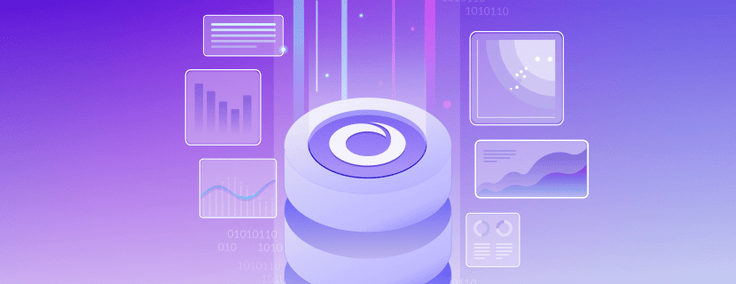
In partnership with Forrester, our recent webinar takes a closer look at translytical platforms, what they mean for organizations and the impact they have on real-time data.
What does real time mean to you? Is it the speed at which you’re able to access information through your organization’s BI tools? Or how quickly your dashboards reflect up-to-the-minute insights? The notions and expectations around real-time experiences — even in the last year — have drastically shifted, with more users expecting analytical applications to function like never before.
But ‘real time’ doesn’t happen on its own. It’s the outcome of a foundation designed to power these experiences and use cases — one that relies on a unified, all-in-one data architecture: a translytical platform, the combination of transactional (OLTP) and analytical (OLAP) processing.
Unifying OLTP and OLAP workloads is increasingly gaining traction in the market, powering use cases never before possible when workloads were separated and handled by specialty databases. Fraudulent payments are caught within milliseconds. Streaming services deliver “watch next” recommendations instantly. And ride share drivers quickly connect with riders.
As more companies take on translytical platforms and databases, what does the future hold for this technology? And, how does widespread adoption of translytical databases impact expectations around real-time data? We sat down with Noel Yuhanna, Vice President and Principal Analyst at Forrester and Franck Leveneur, CEO at Data-Sleek to find out. Here’s what we discussed in our webinar, “Translytical Platforms, Use Cases & Trends Featuring Forrester and Data-Sleek.”
What Is a Translytical Platform?
According to the Forrester report, The Forrester Wave™: Translytical Data Platforms, Q4 2022, “Translytical platforms are next-generation data platforms that are built on a single database engine to support multiple data types and data models. They are designed to support transactional, operational, and analytical workloads without sacrificing data integrity, performance, and analytics scale.”
As Yuhanna goes on to explain, translytical platforms also feature:
- Memory-enabled capabilities
- Multi-model structures
- Scale-out architecture
- AI/ML built-in components
- Zero administration
- Tiered data storage
“At least 25% of your applications and insights need translytical today,” says Yuhanna. “And that number is going to double, we believe, in the next four to five years. If you’re not on this translytical journey today…well, you may be left behind.”
The Benefits of Translytical Platforms
By combining previously siloed workloads into one, translytical platforms deliver a variety of long-term benefits to users — those listed by Yuhanna include:
- Support for real-time analytics, no ETL or additional data movement required
- One platform to support multiple workloads
- Accelerate development for new analytical applications
- Lower costs by eliminating redundant, overly complex data platforms
- Fewer administrative requirements
- Greater business agility, and a competitive advantage
Common Use Cases for Translytical Platforms
“The number of use cases for translytical have been growing,” says Yuhanna. Across industries like financial services, IoT analytics, insurance, manufacturing and retail, translytical platforms are key in helping organizations move toward unified, real-time analytics across their entire technology stack. Some ways organizations are harnessing translytical capabilities include:
- Real-time applications: Fraud detection; patient-health monitoring; airline and hotel reservations; eCommerce; gaming
- Customer-focused outcomes: Consumer personalization; recommendation engines; minimizing churn
- IoT-focused applications: Machine analysis; predictive assessments; procurement
Other common uses for translytical platforms include operational analytics, risk management, online trading, media and advertising, gaming and more.
Finding a Translytical Platform to Transform Your Real-Time Data
For Franck Leveneur, CEO at Data-Sleek, real-time data bottlenecks arose when data sets were well handled by only one type of engine:
“The engine built in the database is meant for [OLTP],” says Leveneur. “...it’s really an engine to track the transaction to make sure it’s captured properly, because the source and quality of the data is important.”
But what about when he needed to conduct analytical queries?
“This creates some issues when you start to have a large amount of data, and you want to perform some analytical queries…and I’m talking about 100 billion rows, for example. Then you start seeing issues. It takes too long, because the [analytical] engine is not really built for that.”
As Leveneur goes on to explain, there are ways to scale reads using replicas — however even these options hit a wall. What he needed was an easier way to handle both workloads, without needing to move data, sacrifice query performance or rebuild their technology stack from the ground up.
Leveneur’s need represents the crossroads commonly reached by businesses: As their organizations and data sets grow in complexity, so do their use cases — and single-engine databases won’t cut it.
It was at a tech conference in San Francisco that Leveneur came across a translytical database that would allow him to handle both OLTP and OLAP workloads, without having to completely rewrite data: SingleStoreDB.
Named a “Strong Performer” in the The Forrester Wave™: Translytical Data Platforms, Q4 2022, there were a few key criteria that made SingleStoreDB stand out:
- Unified data architecture, designed to handle both OLTP and OLAP workloads
- MySQL wire protocol compatibility — or as Leveneur calls it, the “MySQL big brother”
- Rowstore and columnstore capabilities
- Low-latency analytical queries
- Fast ingest for large data sets, even those up to 100 billion rows
Curious to Hear the Rest of the Story? Watch the Webinar Today
To learn more about the future of translytical platforms, what makes SingleStoreDB a stronger performer and see a live use case in action, watch our webinar “Translytical Platforms, Use Cases & Trends Featuring Forrester and Data-Sleek” on demand today.
You can also get your copy of The Forrester Wave™: Translytical Data Platforms, Q4 2022.





